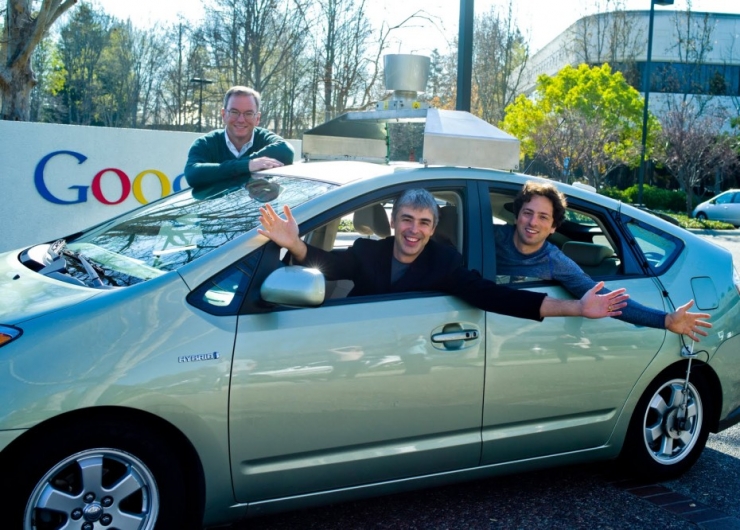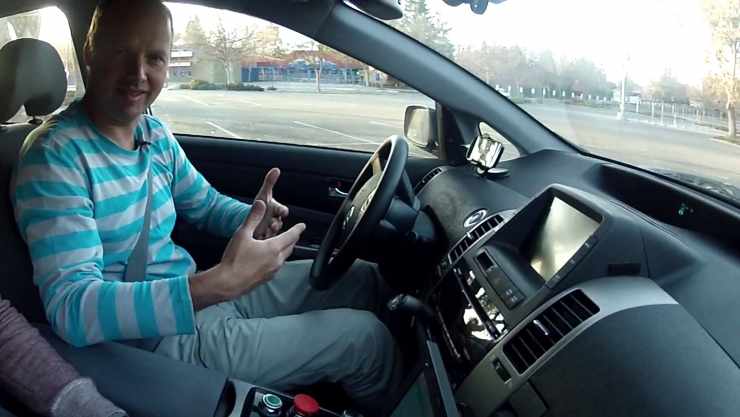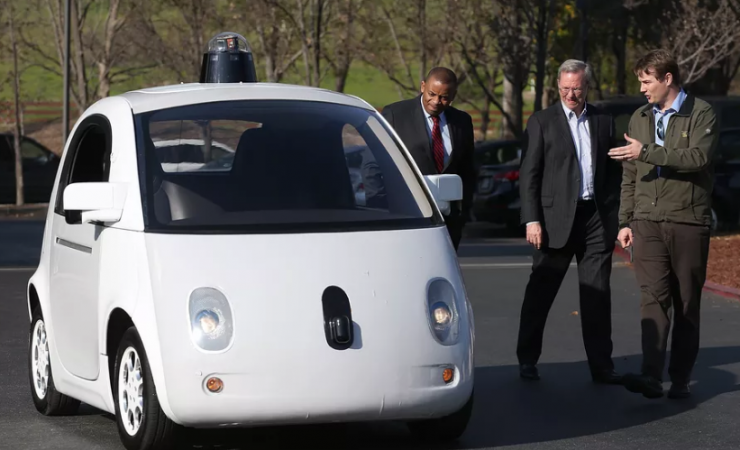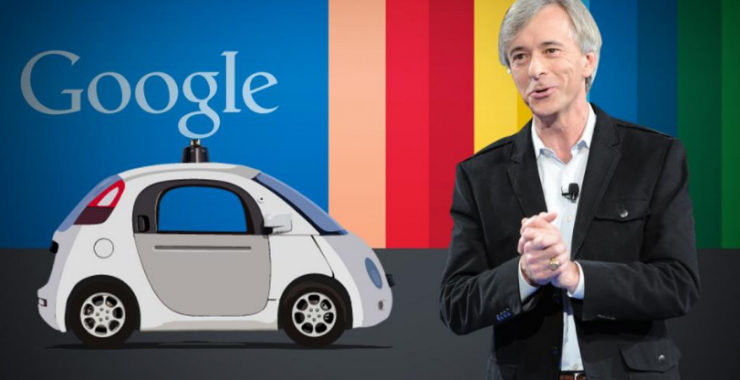
7 years ago, driverless cars are still just a dream. In order to research and develop driverless cars, Google X Labs collected teams participating in the DARPA (Undersecretary of Advanced Research Projects Agency) Unmanned Vehicle Challenge in 2007, making the driverless car a dream.
Seven years later, the members who joined the project left for various reasons. But on each special time node, the departure or entry of some important members seems to have meant that Google’s driverless project has come to a new stage.
Sebastian Thrun
Among the many people who study driverless cars, the German Sebastian Thrun is probably the most brilliant one.
In 2007, Google's two co-founders, Larry Page and Sergey Brin, invited Thrun to Google to help build a mystery laboratory that the company readily accepted and was head of the lab. In this lab, Thrun brought up two projects for driverless cars and Google Glass. This lab is later Google X.
Thrun has been researching driverless cars since 2004. In 2005, Thrun, who was teaching at Stanford University at the time, took students to create a driverless car Stanley who could learn human driving skills. He went to participate in the DARPA driverless car competition, and he successfully passed through the desert and returned to the finish line.

After joining the Google, Thrun led the team-created Junior to participate in the DARPA Urban Challenge and won second place. The difference between Junior and Stanley is that the bright spot of the former is to be able to drive in a real traffic environment and to “overtake†and “wait†like a human driver.
This means that Junior began to have "thinking" and would "observe" and "understand" and make predictions accordingly. The implementation is based on the use of laser radar as an external sensor to acquire ground data, achieve simultaneous positioning and map construction, and uses high-precision map information in the Google database to help the computer make the best decision by comparing the laser radar measurement results with database information. This became the basis for Google’s driverless car.
Shortly after the project was established, Thrun absorbed many top researchers including Chris Urmson, an urban challenge star member. Since then, the entire team has tried to prove to the world that driverless cars are safe enough to drive even in extreme environments.
At that time Google’s driverless system had made the Prius and Lexus teams safely travel hundreds of thousands of miles.
Chris Urmson
In 2013, Thrun resigned from Google, the specific reason is unknown, there is a saying that he hopes to devote more time to another venture. After Thrun walked away, the technical team's burden fell on Chris Urmson.
Urmson is considered to be the hero of Google’s driverless project. He is a researcher at Carnegie Mellon University and has a pivotal position in the field of automated driving.
The Google driverless car project was basically an idea in 2009. Urmson is a crucial figure in the project. He helped the team move this technology from the research phase to the engineering phase. Under the leadership of Urmson, driving unmanned projects into people's eyes.
During this period, Google’s driverless cars have accumulated 1.8 million miles on the road.
In 2009, a modified Toyota Prius completed 100,000 miles of automated driving tests on the highways of Santa Cruz and San Luis Obispo. Soon after, this figure became 500,000 miles with a drive test.
In May 2012, the Department of Motor Vehicles issued a legal license plate for Google Driverless Vehicle after the United States Nevada allowed unmanned cars to get on the road for three months.

In 2014, Google’s unmanned vehicle project began preparations for manpower and various resources to prepare a complete unmanned vehicle from scratch. After repeated modifications to the prototype, Chris Urmson led his team to finally make the new version of the bean cart (without steering wheel and brakes) on May 2015 in Mountain View, California.
John Krafcik
In 2015, Google decided to hire John Krafcik, president and CEO of the former Hyundai Motors (USA), as the head of the driverless car. At that time, Google decided to reorganize itself into Alphabet and plans to transform the driverless car project into an independent company under the parent company Alphabet.
Before joining Google, he was considered to be a talent who understands both the technology and the automotive industry. He can make up for the lack of some industry experience for this project. The appointment of John Krafcik as the head of the company has been speculated that Google’s driverless car project has entered a new phase.
At the same time, Google X Labs has faced financial pressure for a long time. Driverless is the first attempt of Google X in the automotive field, but this has been far from commercialization.
After John Krafcik took over the Google Unmanned Vehicle project, he began to further cooperate with the car companies. For example, in May of this year, Google and Fiat held hands. This is the first time that Google’s driverless team has cooperated with automakers in auto-driving. Sources pointed out that John Krafcik hopes to separate the most core software system and transplant it to the models of traditional automakers to obtain the necessary data.
Last month, Tim Papandreou, former head of the San Francisco Department of Transportation Innovation Office, joined the project as a "head of cooperation"; Kevin Vosen, former chief legal officer of Climate Corporation, served as general counsel and was responsible for legal affairs and government relations.
The outside world has speculated that Google is trying to turn the project into a business and pave the way for its commercialization.
Resignation of core membersHowever, at a time when Google was trying hard to commercialize unmanned technology, Urmson’s departure was heard. He said on Friday that he will leave Google. A spokesman for Google’s parent company, Alphabet, confirmed the matter.
Regarding the motivation of Urmson's departure, the "New York Times" report gave two speculations:
Last year, John Krafcik, president of Hyundai Motor’s former US region, was appointed as the head of the autonomous vehicle. This may be the trigger for Urmson’s intentions.
Urmson had quarreled with Larry Page privately about the direction of Google’s self-driving vehicles a few months ago .
In fact, in addition to Chris Urmson’s departure, in January of this year, Anthony Levandowski, the engineer of Google’s unmanned vehicle team’s technical director, Lior Ron, the original leader of Google Maps, and a dozen other engineers also left. In addition, according to the “New York Times†report, machine vision experts Dave Ferguson and Jiajun Zhu also left Google. Google declined to comment on the departure of the two.
All of these people have been core members of the Google Driverless Project.
For the question of why Google’s driverless projects have left the company one after another, Zhu Yulong, a senior engineer in the automotive industry, told Lei Fengwang (searching for the “Lei Feng Net†public number) that the original team would like to be more independent and do the project. The current responsible person may be Want to rely on cooperation with car companies. The two sides disagreed on the direction.
He further explained:
In the early days, Google’s driverless driver maintained its strong independence. Both the test car and the prototype vehicle were completed in-house, giving full play to the data collection, testing, and software company features: gradual deployment and rapid iteration. Through practice and exploration, it avoids the recognition of traditional car companies and draws on DARPA game experience to optimize.
The problem is that they have a huge cognitive gap with traditional car manufacturers. For example, there are differences in road safety management, vehicle auto-pilot QRD, overall system security, maturity, and commercial awareness.
Not long ago, John mentioned in an interview with Bloomberg that it was clear that Google would not build its own car. He said that it is very difficult for Google to make a car himself. Now they have the help of Roush and the Continental Group, and the 100 hybrid vehicles that have partnered with Fiat have more than doubled the number of test vehicles.
Zhu Yulong stated that consulting with automotive manufacturers engineers has the benefit of considering the depth of each scene. The downside is that cognitive conflicts begin to increase with the impact of the original developers . For example, will Google maintain its own pace of development? Or is it in accordance with the development process and argumentation of car enterprises? This shows that Google's pace for the future does not make everyone agree.
The road to commercializationWith the departure of the initial core staff of Google’s driving team, does it mean that the future of Google’s driverless project is worrying? Or is it that the departure of this group of people actually brought the project closer to commercialization?
The engineers of the domestic drone team expressed that they were observing change, but some people also thought that “all those who have a stable career lacked success†and there were also predictions that as the core personnel left one after another, the Google’s autonomous driving team was unable to continue the current technology route ( Full automatic drone, real business value, the final outcome is not optimistic.
From the start of testing in 2009 to July of this year, Google’s driverless cars have accumulated 2.89 million kilometers, which has accumulated a considerable amount of data. But this 7 years ago was considered to be the craziest project in the Google X Lab, and it will not be “handy†on the road to using technological innovation to achieve business success.
Optical Rotary Sensor,Custom Encoder,Optical Encoder 6Mm Shaft,Handwheel Pulse Generator
Jilin Lander Intelligent Technology Co., Ltd , https://www.jilinlandertech.com